I woke up at 6:15am to another beautiful morning in Tiberias on the Sea of Galilee. This will be the last day and night here before we move to a hotel near the Dead Sea tomorrow.
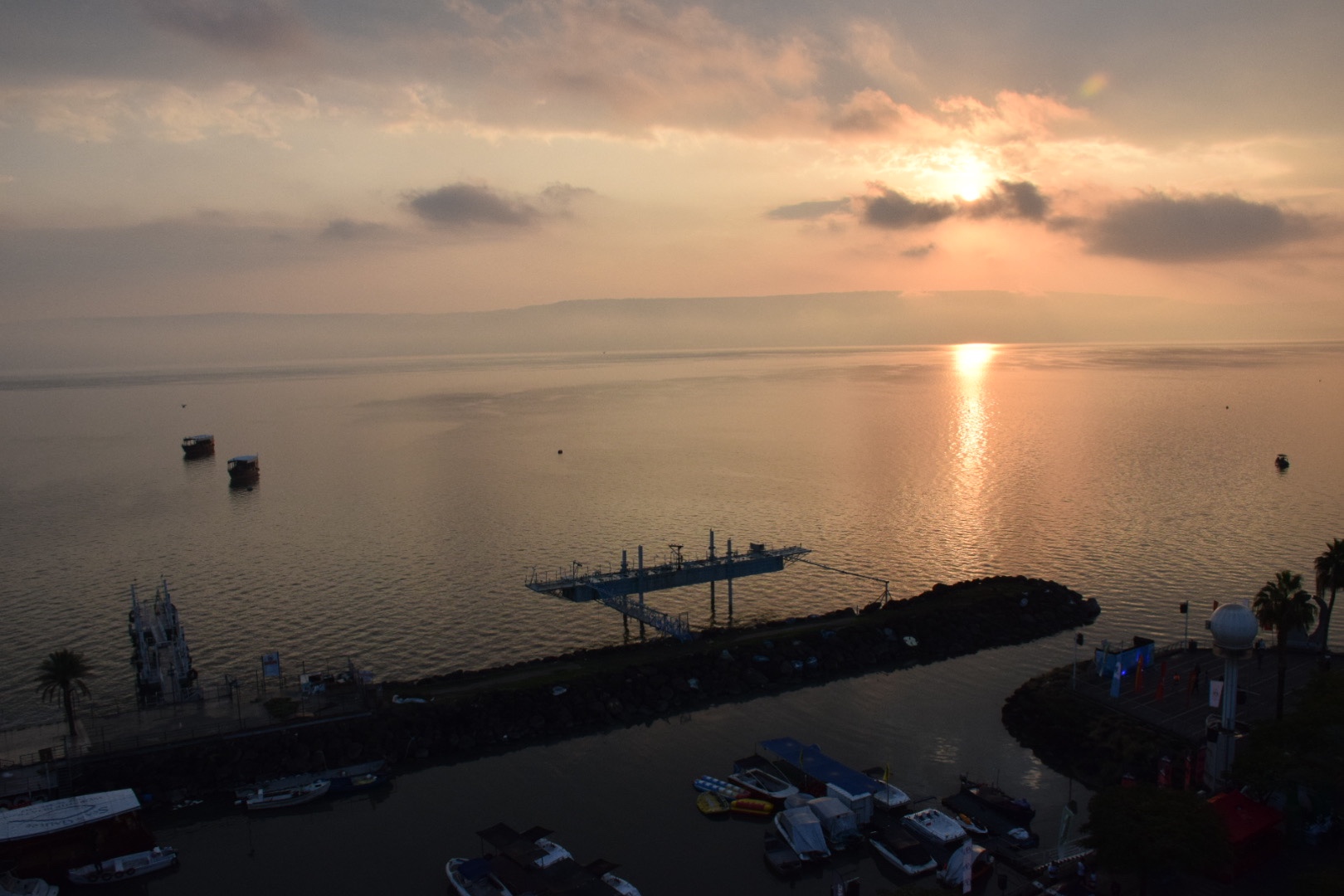
There was loud music coming from the street, along with lots of activity, as they were preparing for the marathon around the Sea of Galilee. Today also marks the Shabbat (Sabbath) at sundown.

For breakfast I had fried eggs and a plate with 5 different varieties of cheese. During breakfast I was sitting next to my dear friend Jeff Hallums and someone else in the group thought he was my dad.

We got a good laugh out of this since Jeff is only 12 years older than me.
We had to walk a bit to the bus due to the marathon and then began our drive west to Sepphoris. Again the views of the Sea of Galilee were stunning. We also saw some of the canals that are used to move water from the sea to the desert areas.
Murad talked about the Greek (333 BC), Roman (63 BC), Byzantine (324 AD) periods and beyond. He also talked to us about the purpose of the gospels, which was not as history books but to build faith in Jesus. The example he gave was that all we know about Mary and Joseph, the parents of Jesus, is about their role in His birth and upbringing because the stories of their lives are not central to the good news. However, where history is required to tell the story of Jesus, they were very precise.
Zippori / Sepphoris
After about an hour drive we arrived at the town of Zippori, which was later renamed Sepphoris and then back to Zippori. The name is derived from a word meaning bird, because it is on a hill (i.e. bird’s eye view). When we got out of the bus it was quite chilly and windy due to the elevation.
Zippori was a major city in lower Galilee, four miles northwest of Nazareth. It is never mentioned in the Bible, but it is possible that Jesus might have come here due to its proximity to His hometown of Nazareth.
This archaeological site was very, very impressive, and was a joy to visit. Murad said that everything we saw was authentic and had not been restored. Some of the remains that Murad showed us included:

*A mosaic floor from a 5th century AD synagogue. This mosaic was beautiful and incredibly intact.
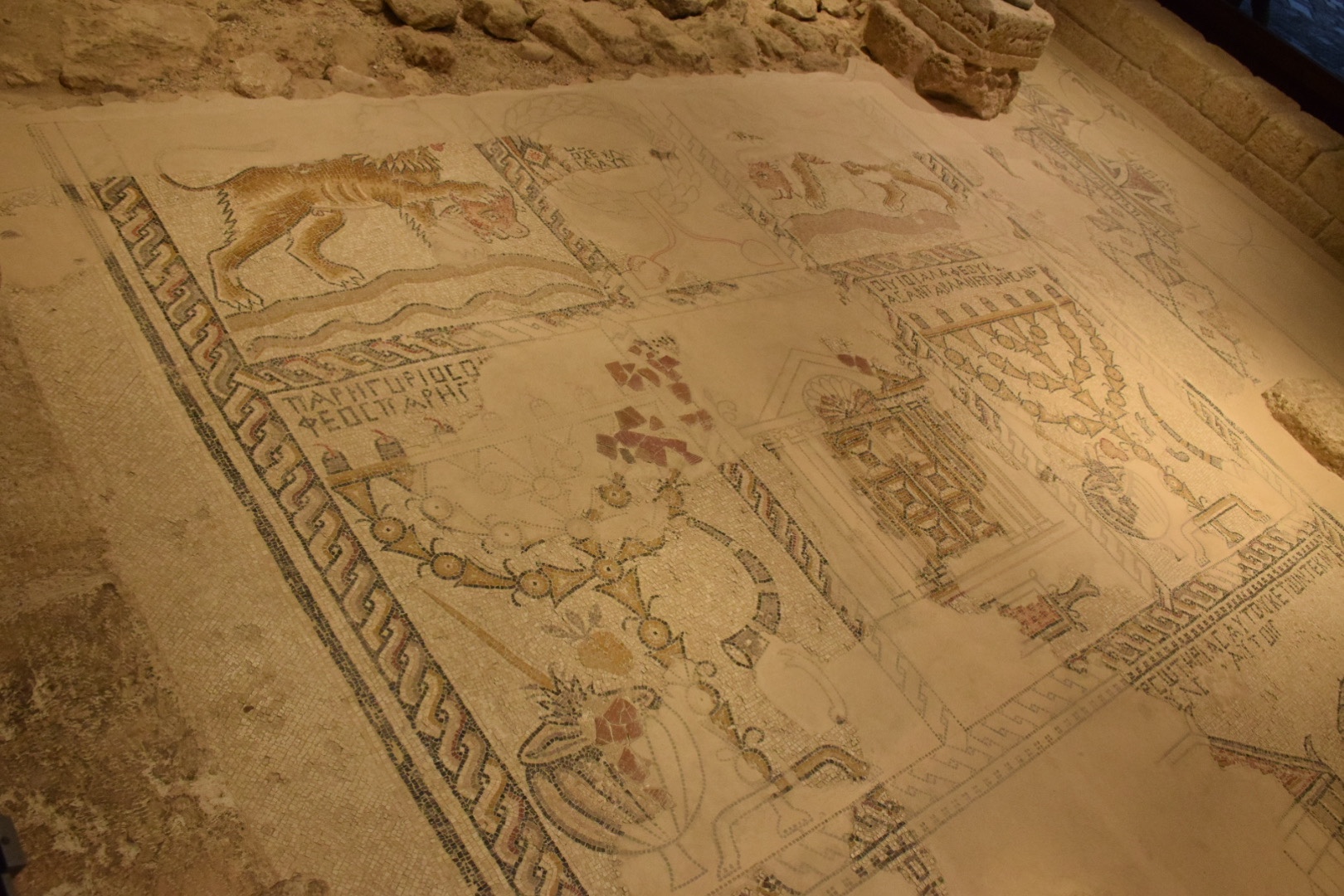
It included elements from the temple worship such as the menorah and shofar,

a depiction of Abraham sacrificing Isaac,
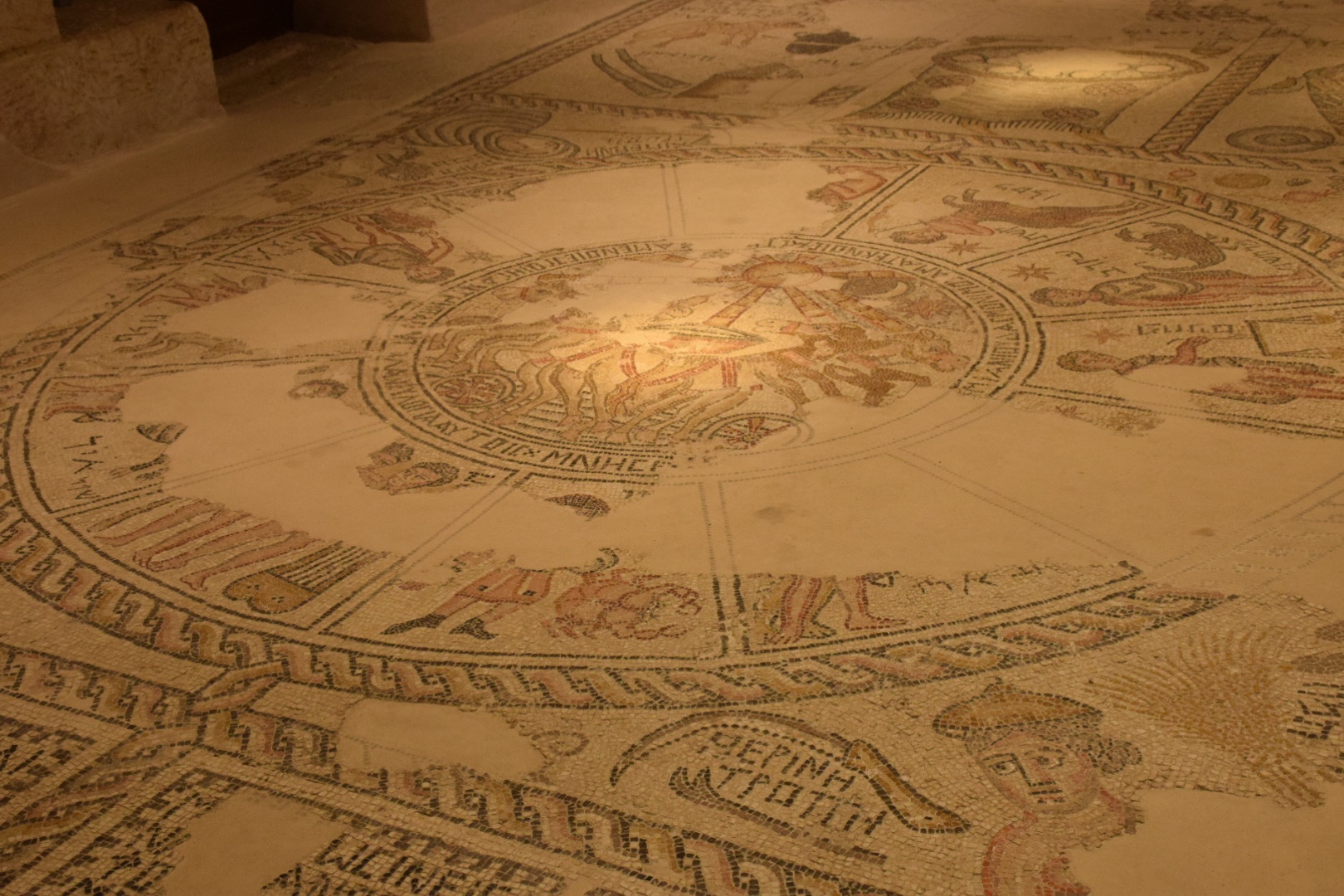
and a zodiac featuring Helios god of the sun. This shows the influence of the Greeks and Romans on Jewish worship. Of a side note, the Sanhedrin moved to Zippori in the 2nd or 3rd century and the Mishnah was completed in Zippori during the 3rd century AD before this synagogue was built.
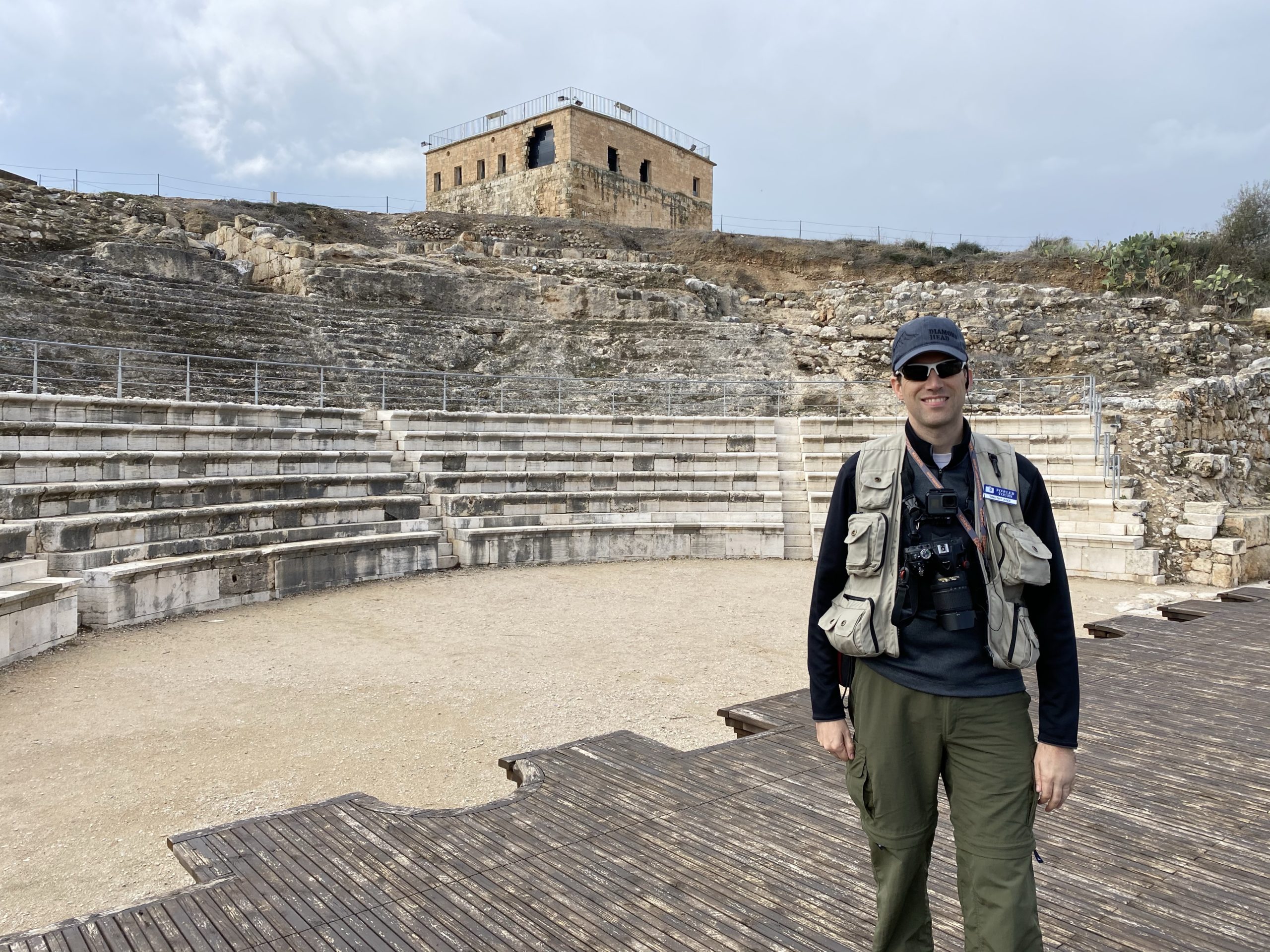
*A Greek style theater from the 2nd century AD. This was smaller than the one in Caesarea but was still impressive.

*A residential area with many ritual baths (Mikveh) from the Roman period and beyond.

*A citadel from the period of the Crusades that was at the very peak of the hill.

We were able to go to the top of the citadel to get some amazing views of Galilee…

and of the city of Nazareth. Galilee is so incredibly green and beautiful.

*The remains of a private house from 2nd century that is called the Dionysus House. Dionysus was the Greek god of wine. This name comes from a beautiful mosaic floor that depicts Dionysus.
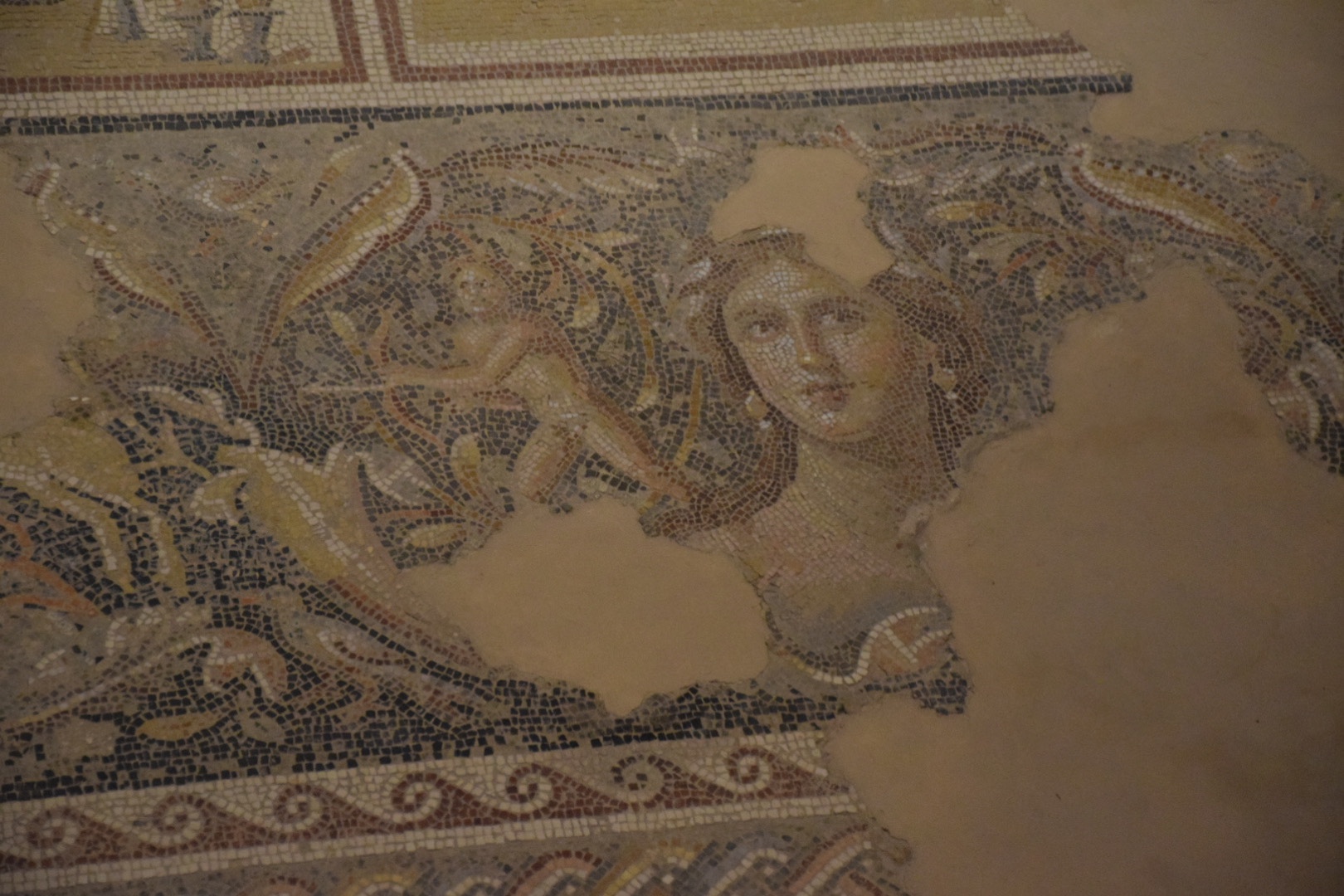
The mosaic also contains a beautiful, detailed depiction of a woman’s face that is known as the “Mona Lisa of Galilee.” This would have been the house of a wealthy family and would have had room for 3 beds. It was destroyed by an earthquake in the 4th century AD.
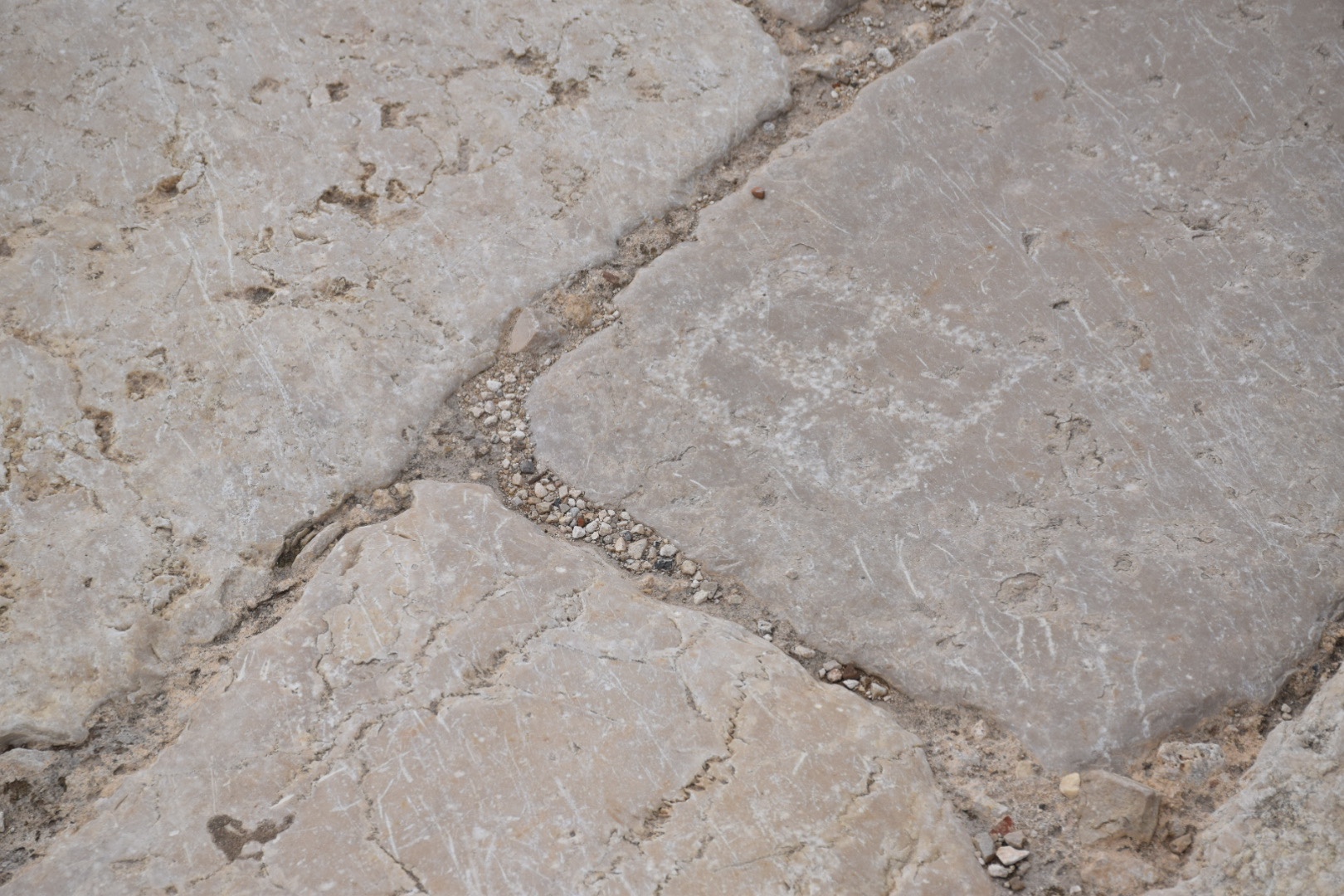
*An authentic Roman road from the 2nd century AD with children’s games drawn in the stone.

The stones also contained ruts from the chariots. It was amazing to me that we were able to walk on this road.

*A public building known as the House of the Nile River from the 5th century AD (Byzantine Period). This building also had a very detailed mosaic floor that contained scenes from the Nile River.

This included personifications on the Nile such as the god of the Nile, which is a man with woman’s breasts signifying fertility.
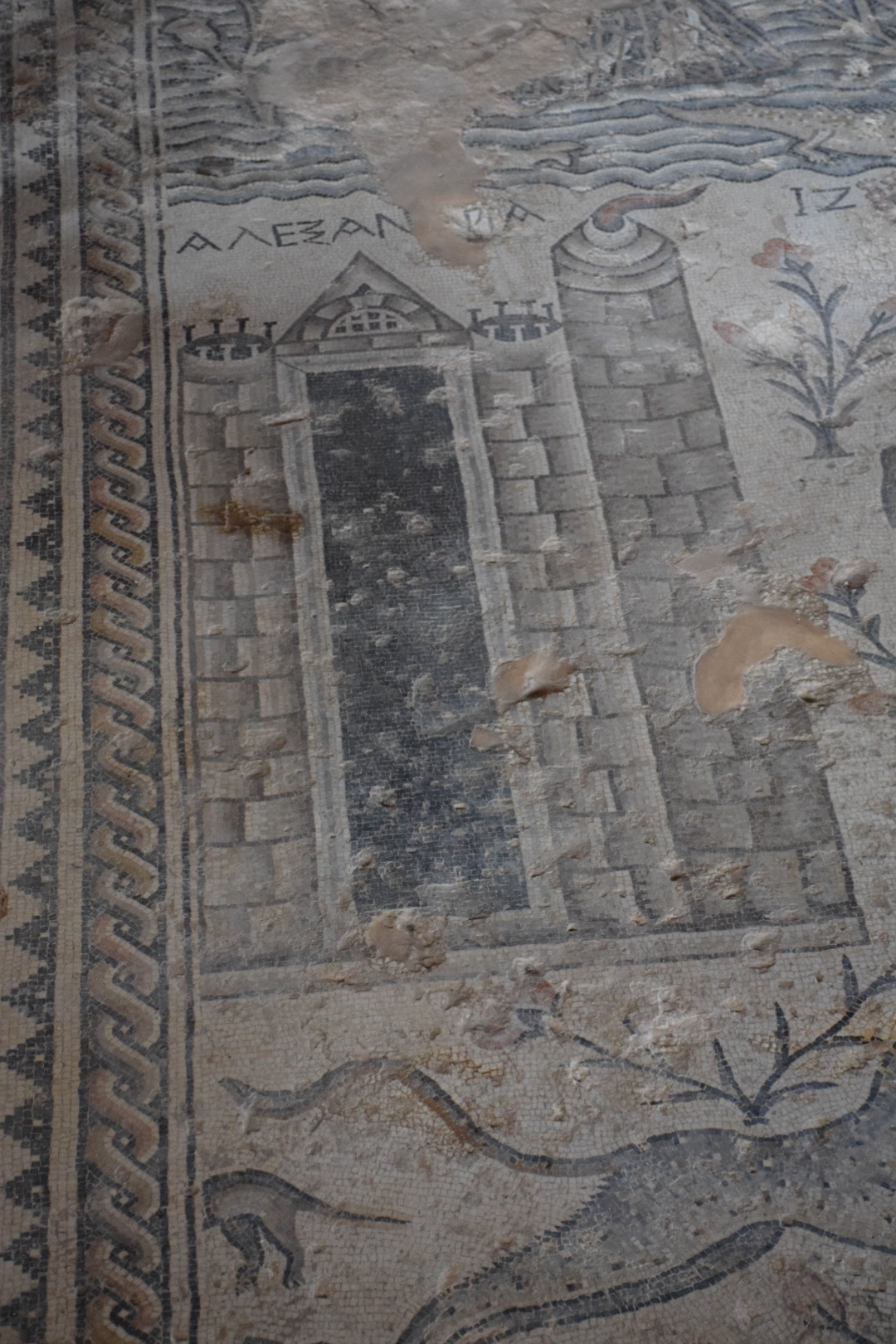
There was also a depiction of the lighthouse of Alexandria…
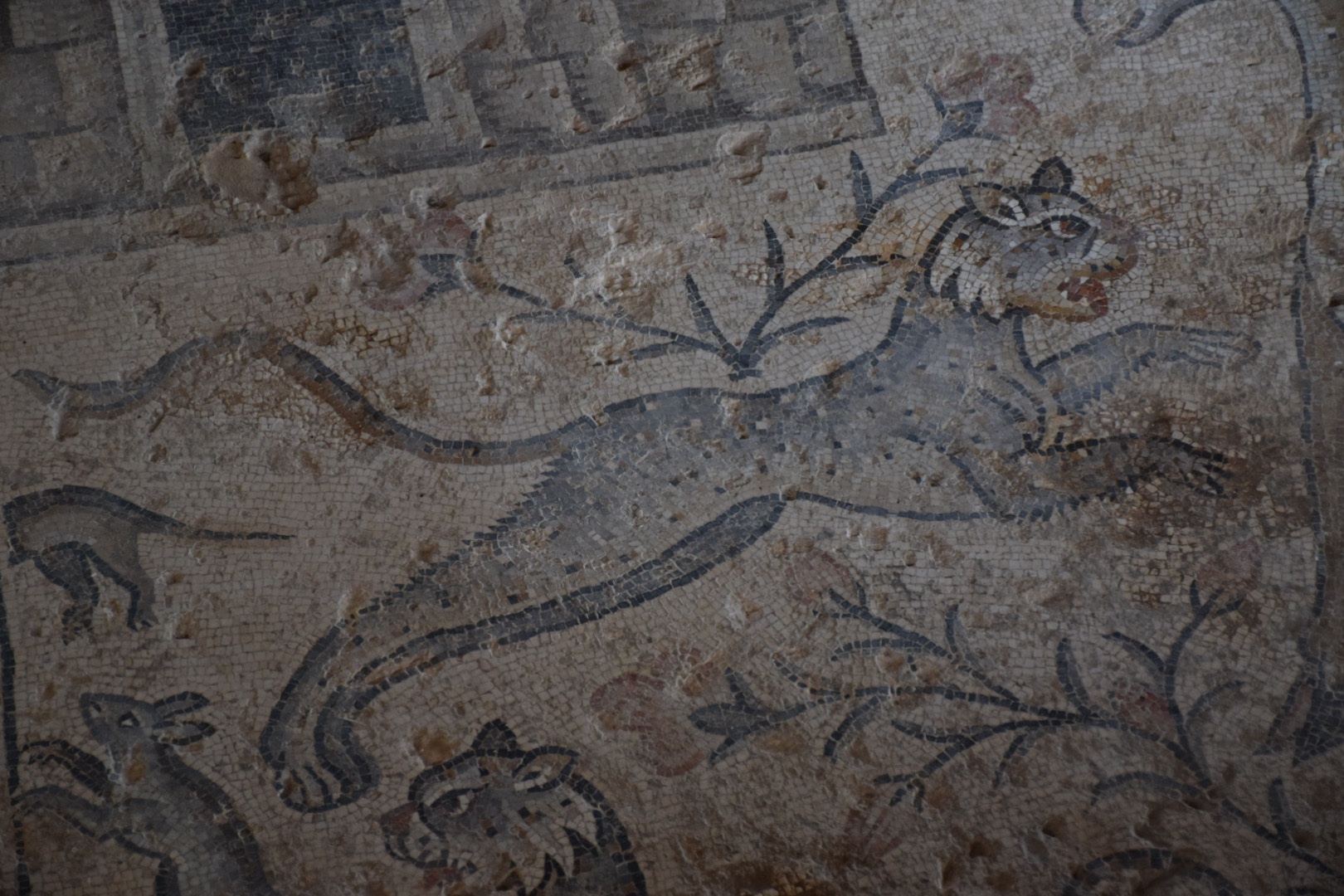
and the festival of the Nile with many animals.
Beth-Shean (Beth Shan)

After Zippori, we drove through the Jezreel Valley toward Beth-Shean. From the bus we again saw Mt Tabor that we visited on Tuesday.
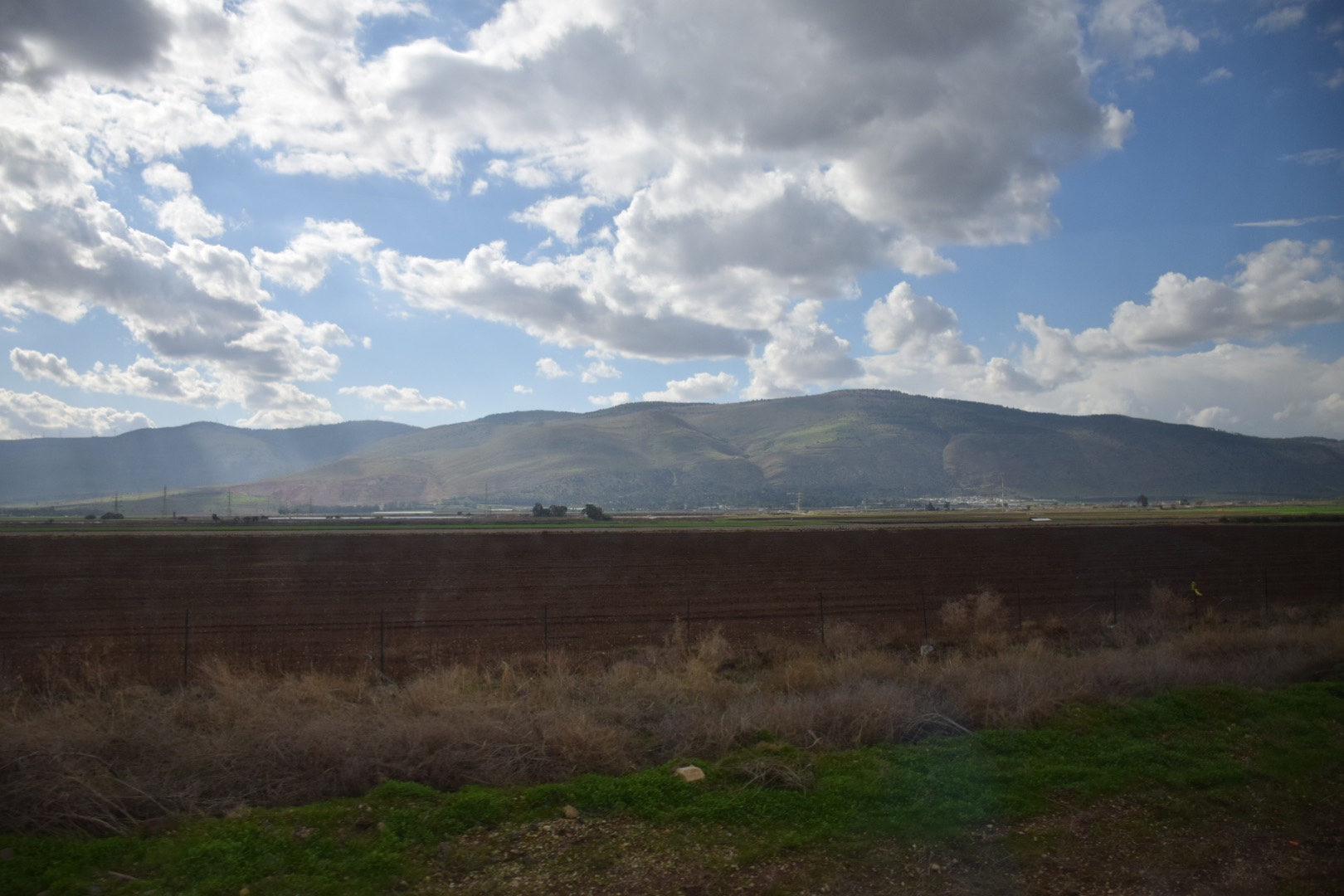
We also saw Mt Gilboa, which is known for the battle where the Philistines defeated the Israelites and Saul and his three sons died (1 Sam 28:4; 31:1, 8; 2 Sam 1:6, 21; 21:12; 1 Chr 10:1, 8). After David heard about the death of Saul and his sons, he cursed the mountain (2 Sam 1:21).
Everything in the valley is very lush and green. Along the route, Murad talked to us about current state of Israel’s government and what life is like for Israel’s residents.

We stopped for lunch in the modern town of Bet She’an before heading to the archaeological site. I had a “Schnitzel,” which is a chicken breast in a pita.

Beth-Shean is located about five miles northeast of Mt. Gilboa along the Harod Brook, where the Jezreel Valley meets the Jordan Valley. It was first occupied in the fifth millennium BC. The original settlement was on top of a large Tel (which we saw), overlooking the surrounding area. During the Hellenistic period, the city spread out around the Tel, eventually encompassing 400 acres. During the Hellenistic Period, the city was included in the Decapolis under the name of Scythopolis (“city of the Scythians”).
The book of Joshua first mentions Beth-Shean as one of the cities of Manasseh. According to Judges 1:27, the city was still inhabited by Canaanites during the period of the judges. First Samuel records that after the Philistines killed Saul in battle at Mt Gilboa, they hung his body and those of his three sons on the wall of Beth-Shean and placed his armor in the temple of Ashtaroth (1 Sam 31:8–13). According to 1 Chronicles 10:8–12, the Philistines also hung Saul’s head in the temple of Dagon. Beth-Shean eventually came under Israelite control, and according to 1 Kgs 4:12, it became one of King Solomon’s administrative districts.
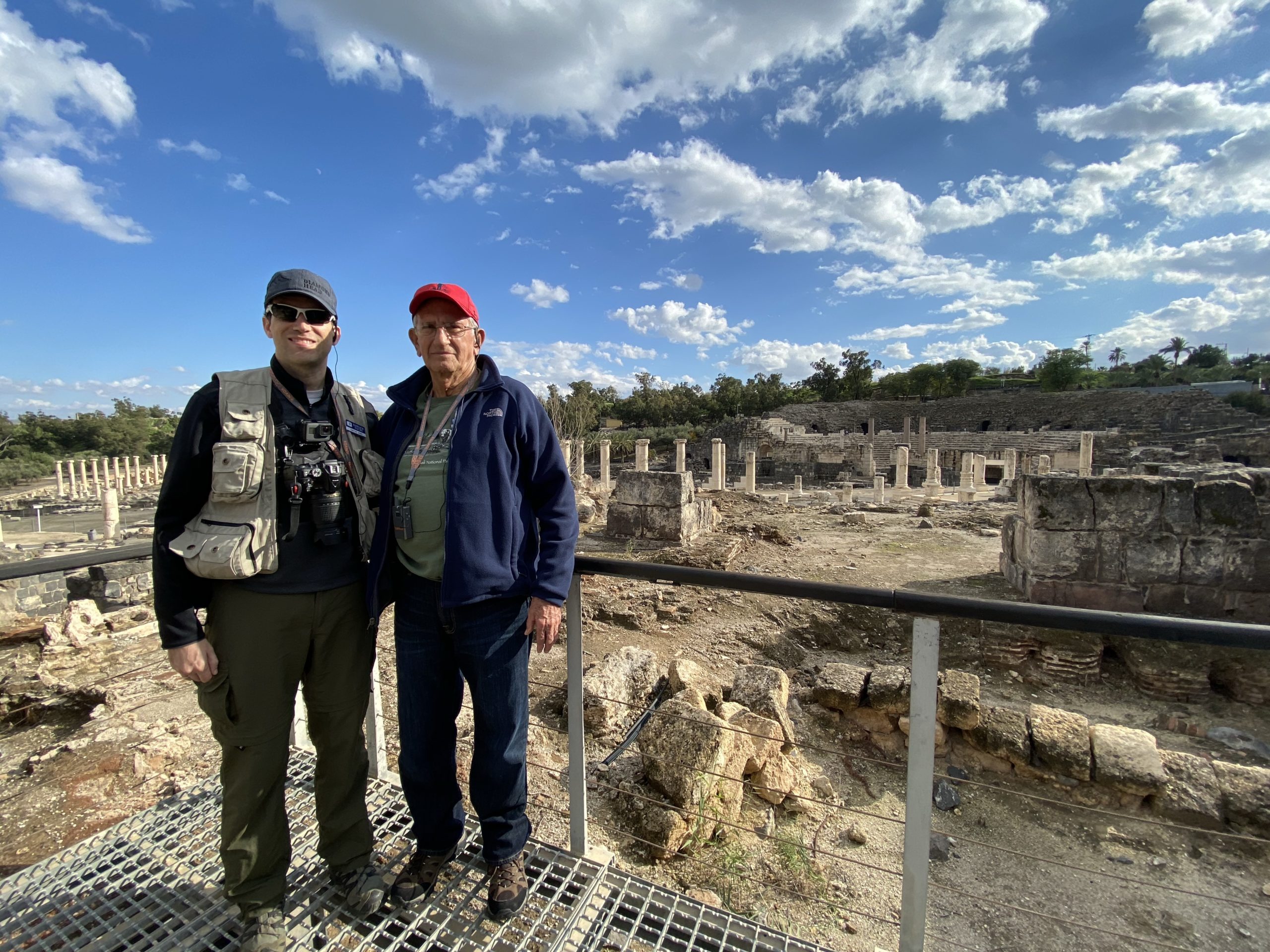
When we arrived at the archaeological site, I was blown away at the size and magnificence of the excavations. It was awesome. Murad explained to us that the name Beth means “house” and Shean (or Shan) was a Canaanite god. He also explained that Beth Shean guarded two of the most important routes of the ancient world; “the King’s Highway” and the “Via Maris.”
Even though this Beth-Shean is mentioned in the Bible as noted above, most of the excavations today are from the Byzantine Period during the 4th and 5th centuries AD. Murad took us on a tour of the site around the Tel. Since these excavations are from more recent times, they are a lot more intact than much of what we’ve seen so far at other sites. Some of the highlights included.

*A bath house that includes 3 rooms (1) hot room or sauna (2) cold room (3) cool room for transition from sauna to cold. We saw lots of remains of pillars made of mud bricks that were used to lift up the floor. He said that slaves would burn wood outside through arches to heat the sauna. This was a very large structure.

*A baptismal fount on the back side of the bath house. Murad said that this site also functioned as a Byzantine church. Near this we also saw public toilets from the era.
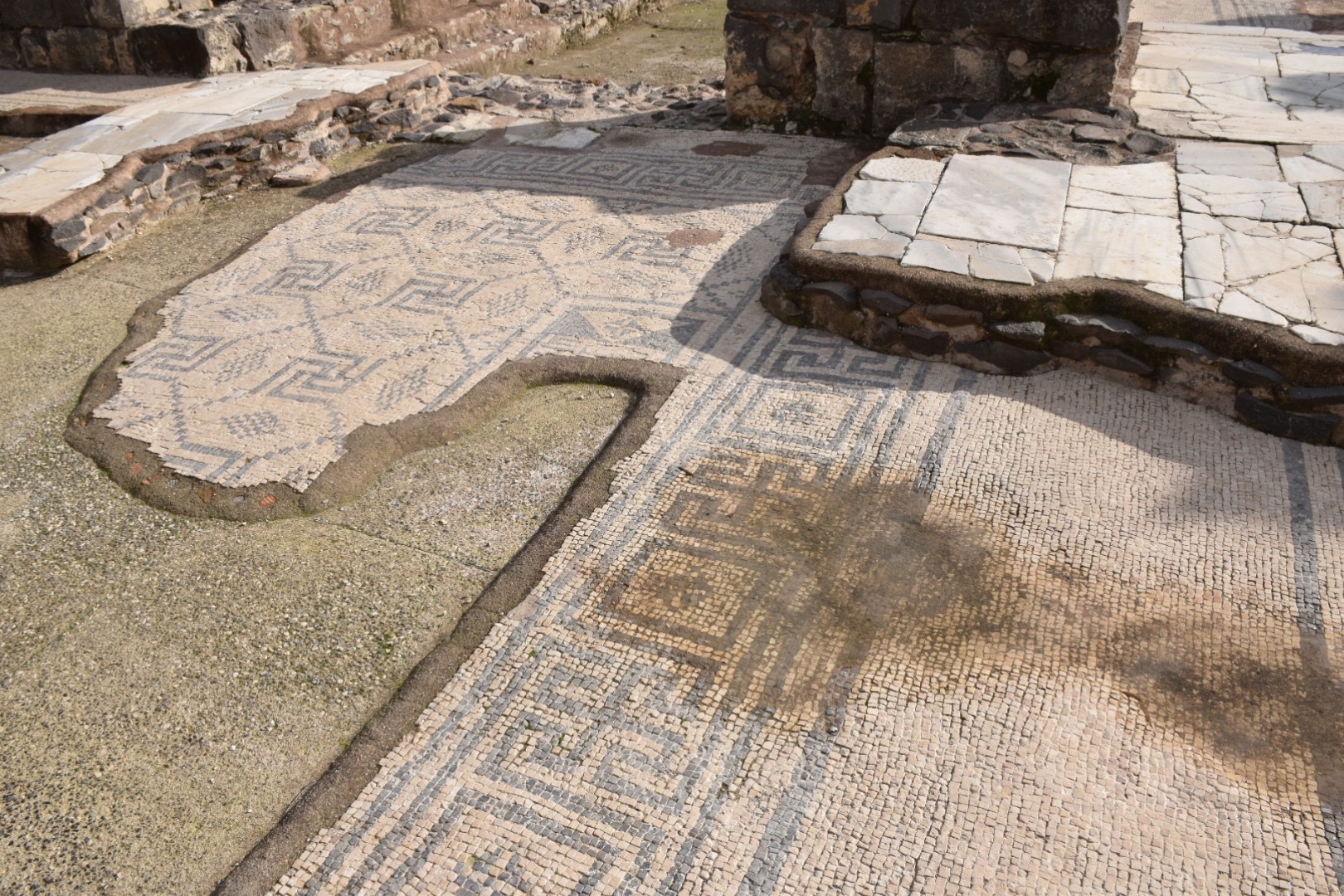
*A road behind the bath house where you could see several layers or strata over the centuries. One of these layers contained intricate mosaics.
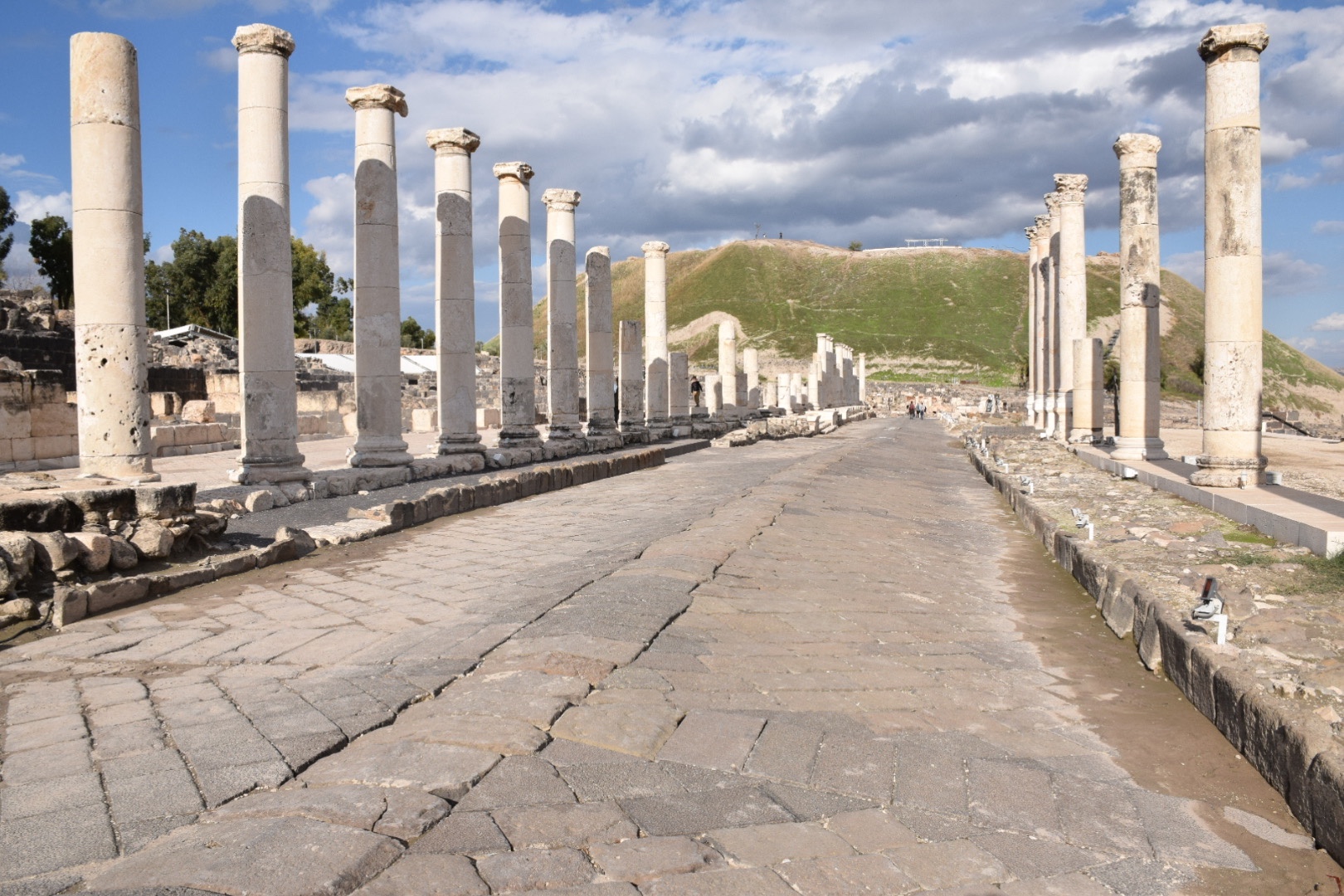
*Palladius Street that was lined with columns and had an underground drainage “pipe” running under the street. This street was most impressive.
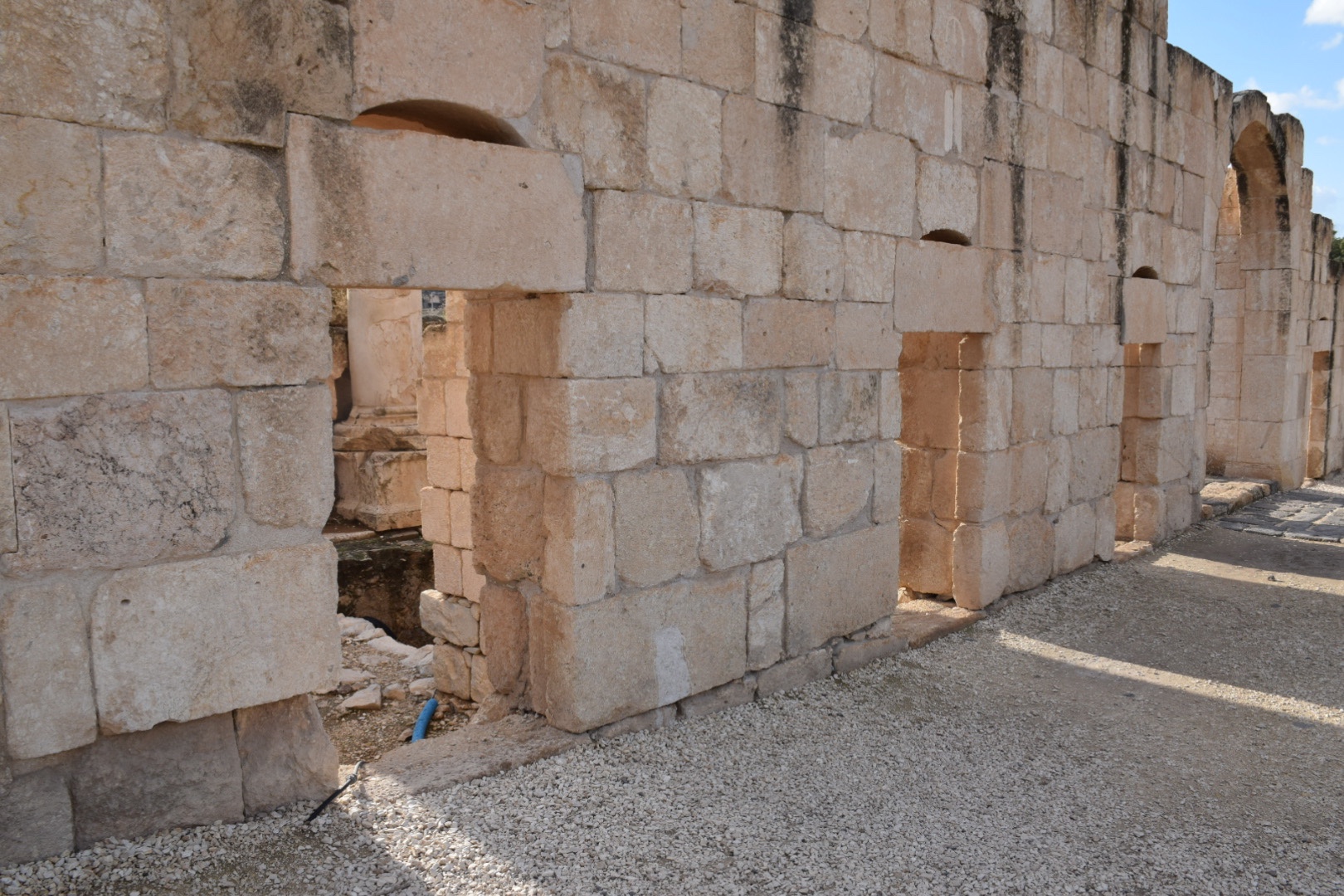
*Sylvanus Street with columns and shops on one side.
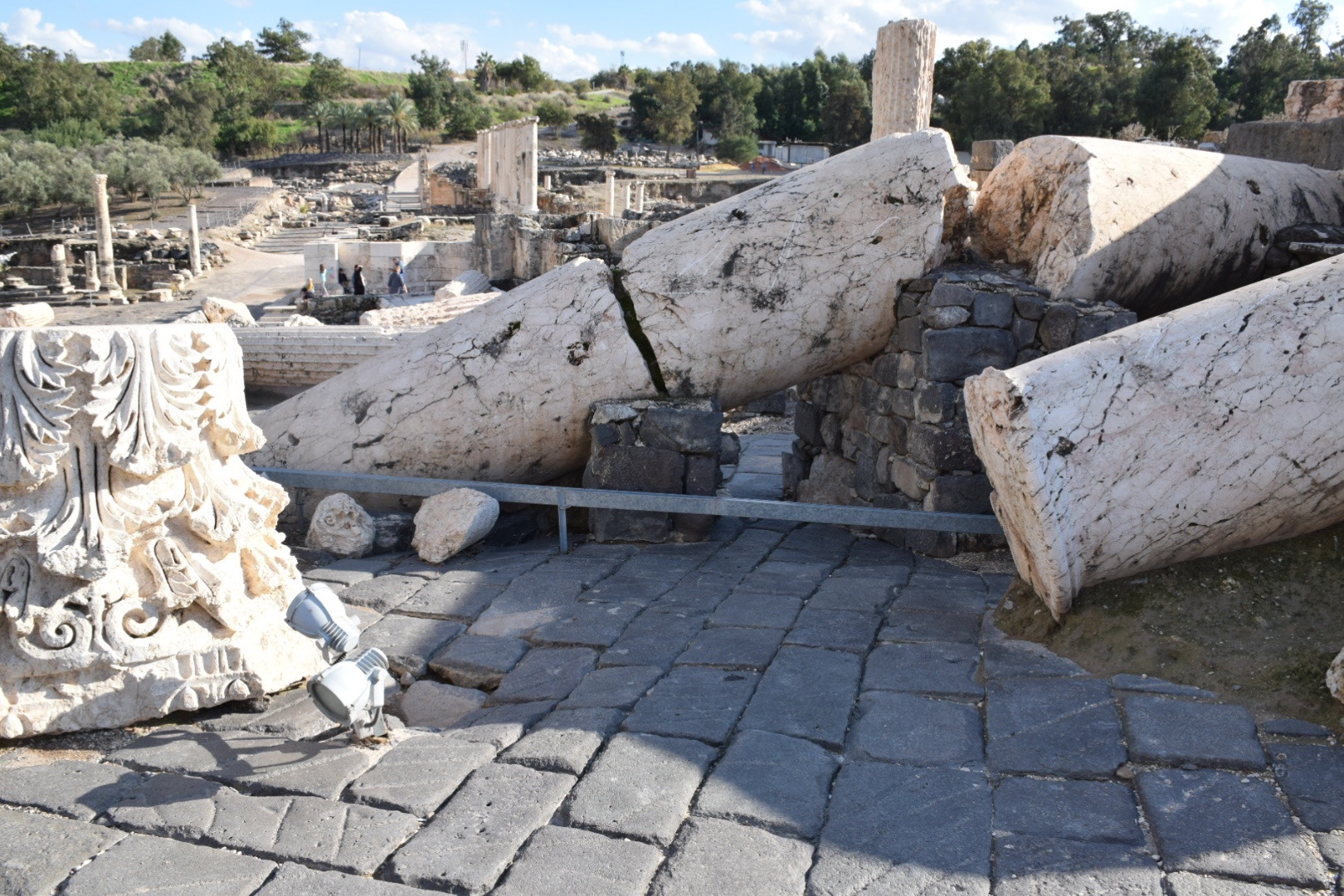
*Fallen columns from the earthquake in 749 AD that destroyed the city.
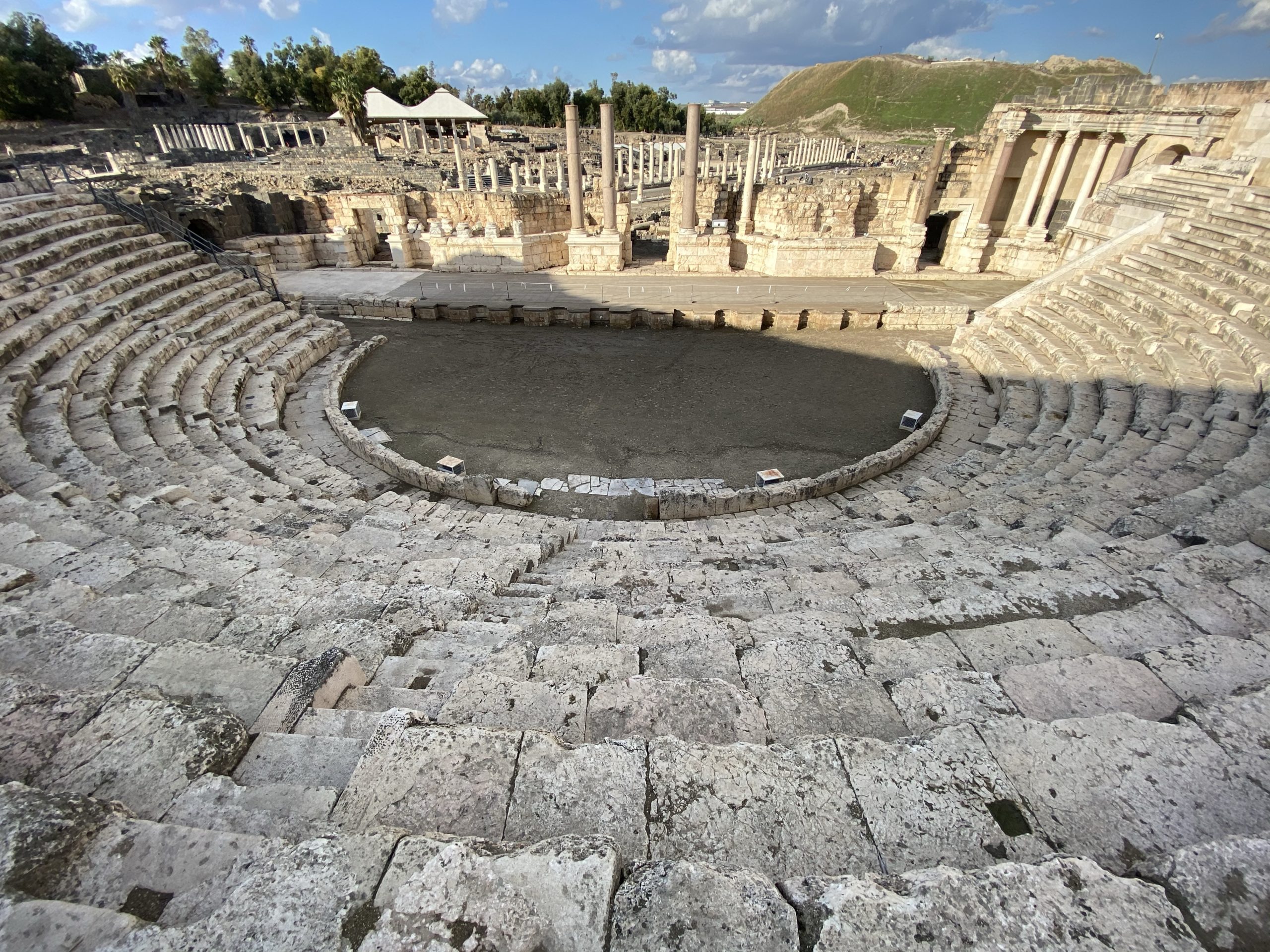
*A beautiful Greek-style theater that is quite large.

After Murad had shown us around the excavations, he gave us an opportunity to climb to the top of the Tel.

It was a big climb, but the views of the city and of the country of Jordan were magnificent.
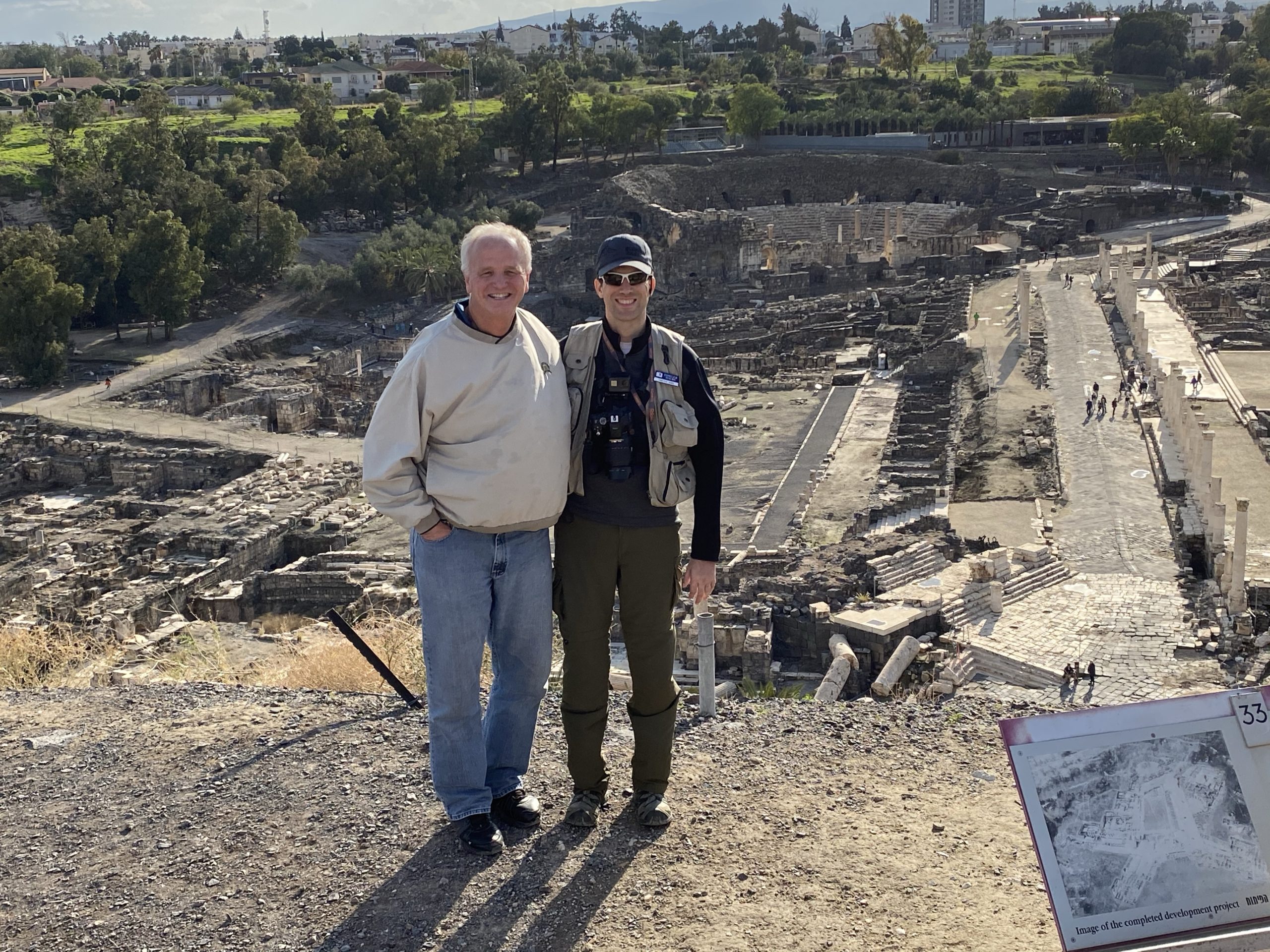
I was blessed to take a picture with my former preacher Keith Parker while on top of the Tel.
The Tel is comprised of 20 strata dating back to 5th millennium BC. It is likely that within one of these strata is the wall where Saul’s body was hung. Today, the only significant excavation on top of the Tel is a house of the Egyptian governor from the 12th century.
Overall, this was one of my favorite sites of the trip, and it was a lot of fun to photograph.
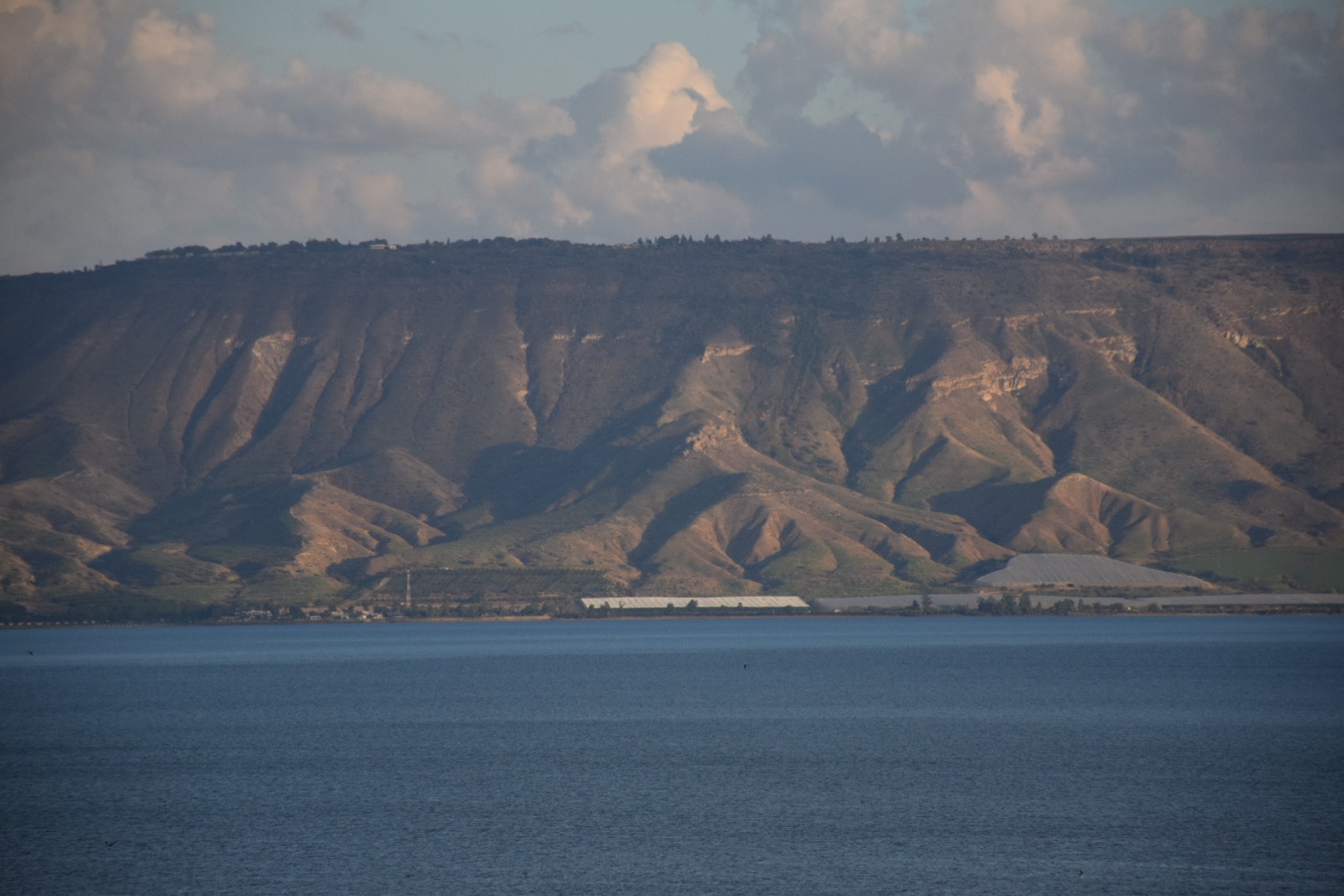
We drove back to the hotel along the Jordanian border, and it was a beautiful afternoon. Back in Tiberias, the Sea of Galilee was especially striking with the sun hitting the Golan Heights on the far side of the lake. The cliffs reminded me a lot of the Nepali Coast on the northwest side of Kauai in Hawaii.
We got back early enough that I was able to take a short nap before heading to dinner at the hotel. Several Jewish families were celebrating Shabbat in the dining room with their families.
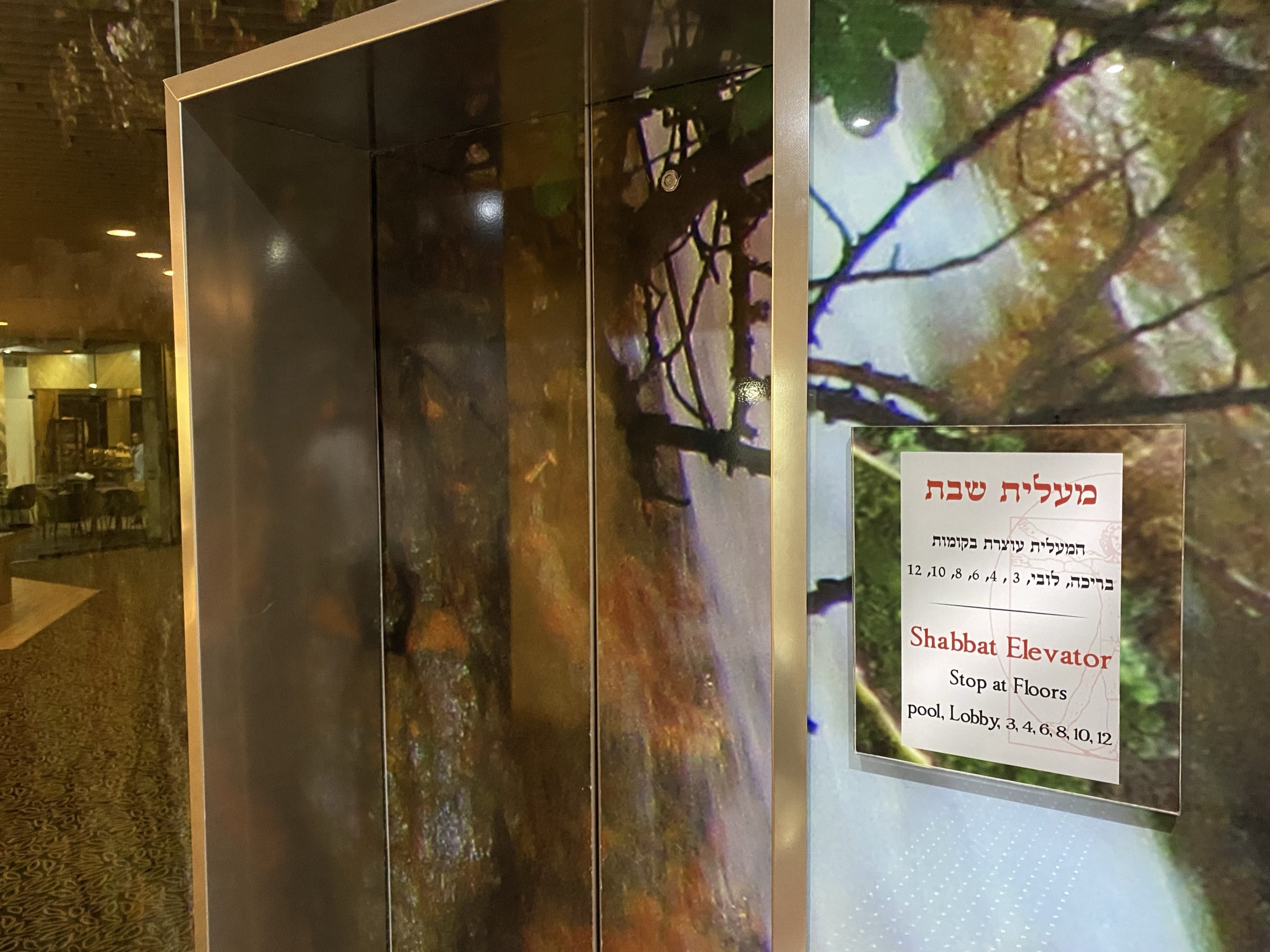
On a side note, there is one elevator in the hotel that is designated as the Shabbat elevator. It automatically runs and stops at every other floor to prevent anyone from having to “work” to push the button to go up.

I just got off the phone from talking to my girls back home. Even though this is a wonderful trip, I still miss them so much. It was great to hear their voices. I’m now listing to some live music in the lobby of the hotel.
Tomorrow we leave our hotel in Tiberias that has been our home for 4 nights and head south to the Dead Sea area.
